FLW Walleye Tour Championship: Bismarck bound
Missouri River tournament to decide who reigns as walleye king in 2008
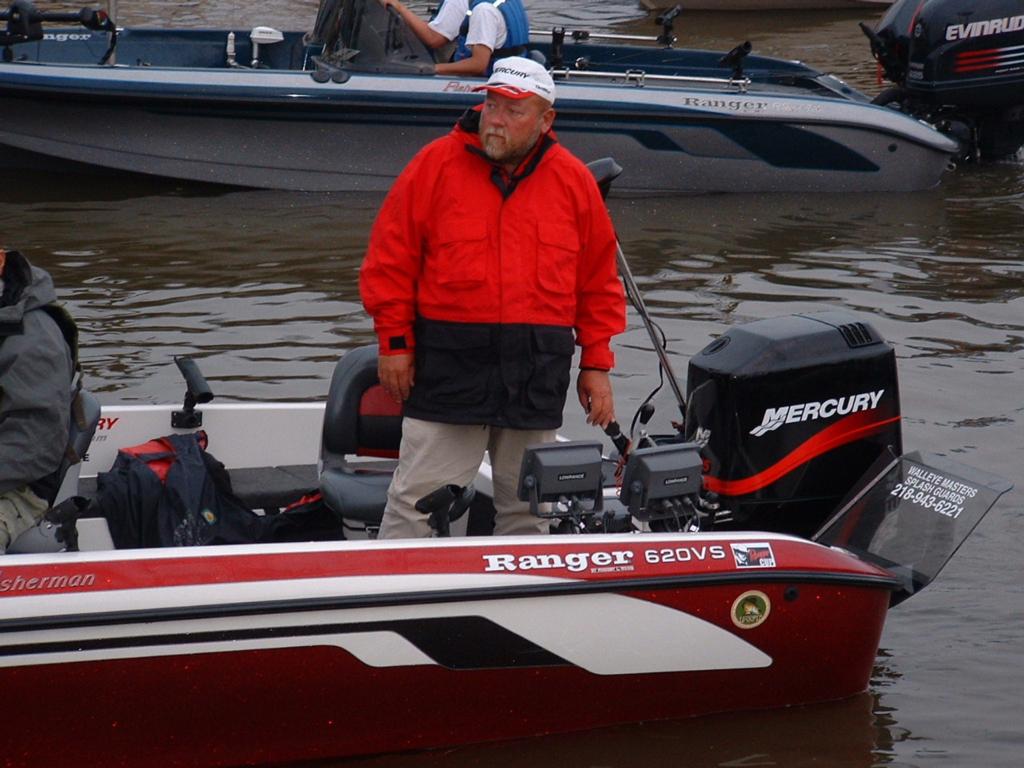
It’s fall on the Missouri River, when walleyes are caught on jigs, rigs, crankbaits and bottom bouncers. Load the boat with a full arsenal of tackle and bring plenty of bait.
Oh, and be sure to throw in a shovel, rake, spare prop, hip waders and 200 feet of rope.
The Missouri River from Garrison Dam to the South Dakota border is a maze of sand bars, stump fields and other underwater hazards that appear one day and are gone the next. It’s a challenge to fish and risky to navigate, so the 108 pros and co-anglers who hit the river at Bismarck Sept. 24-27 for the ninth annual Walmart FLW Walleye Championship will have all their emergency equipment on board.
“Even under the best conditions, it’s constantly changing,” says Pete Harsh, the Sauk Centre, Minn., pro who’s reigning FLW Walleye Angler of the Year. “That nice hole you had three days ago is now a sandbar in 6 inches of water. Finding fish that hold a pattern for several days is tough. You have to move and adapt.”
Chris Gilman, who enters the tournament as the fourth-ranked pro, hasn’t fished the Missouri in eight years, but has fond memories of some great spots. There’s one problem, however.
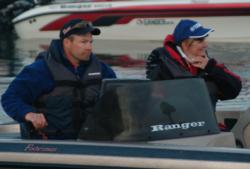 “They’re all 10 feet out of the water,” says Gilman, who has qualified for his fifth FLW Walleye Championship. “It will be a brand-new river for me. My main goal the first day will be to learn how to drive it.”
“They’re all 10 feet out of the water,” says Gilman, who has qualified for his fifth FLW Walleye Championship. “It will be a brand-new river for me. My main goal the first day will be to learn how to drive it.”
Nine straight years of drought had dropped the Missouri’s water levels to record lows, though normal snow and rain this past year have the river 10 to 12 feet higher than it was last year at this time. When the stream is low and narrow, it’s called “the river” by locals. When it’s high and wide, it’s called “Lake Oahe.” Today, “Lake Oahe” extends 15 to 20 miles into North Dakota.
Walleye fishing always picks up in the fall, when the fish begin to migrate from south to north, eventually wintering under the Garrison Dam. Average size has improved. Ten years ago, when the North Dakota Fish and Game Department began annual surveys on the river, just 10 percent of the walleyes were 15 inches or longer. Today, 70 percent are that size, with good numbers of 20- to 25-inch fish and the occasional lunker up to 30 inches.
Credit the bigger fish to the forage base, which has ample rainbow smelt, spottail shiners and white suckers. And there’s a newcomer in the mix – gizzard shad.
“They were introduced into reservoirs in western South Dakota,” says Paul Bailey, district fisheries supervisor with the North Dakota Fish and Game Department. “High water allowed them to escape into Oahe. We first found them in North Dakota in 2002, and since then they’ve become very abundant. They’ve really helped the walleyes, though they might be hurting the populations of some native forage species.”
Shad begin to die as the water cools. Come fall, walleyes accustomed to gorging on shad during spring and summer now find the cupboard bare, resulting in quick limits for anglers who get on a hungry school.
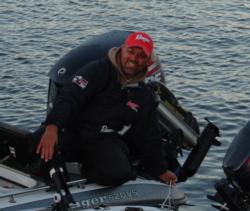 “I predict everybody will weigh a limit every day,” says Bismarck’s Troy Morris, who will fish his first FLW Walleye Championship as the hometown favorite. “There are fish everywhere, and you’ll see some good weights. Somebody will have that 8-, 9- or 10-pounder.”
“I predict everybody will weigh a limit every day,” says Bismarck’s Troy Morris, who will fish his first FLW Walleye Championship as the hometown favorite. “There are fish everywhere, and you’ll see some good weights. Somebody will have that 8-, 9- or 10-pounder.”
In many places, shoreline that was dry last spring is now submerged, Morris said. Vertical jigging and slip-bobber rigging is the best way to fish these snag-filled areas. Last year, Tom Kemos of Oconomowoc, Wis., jigged his way to a Missouri River tournament win.
Most pros will troll crankbaits at least part of the time. It’s a dependable method that’s led to several tournament wins over the years.
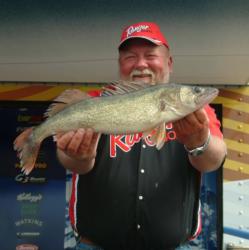 “If the weather is stable, it’ll be a crankbait bite,” says Harsh, who predicts it will take at least 15 pounds per day to make the final cut. “But if a cold front moves in, it’ll be jigs. I’ve done both in the same tournament in the past.”
“If the weather is stable, it’ll be a crankbait bite,” says Harsh, who predicts it will take at least 15 pounds per day to make the final cut. “But if a cold front moves in, it’ll be jigs. I’ve done both in the same tournament in the past.”
Gilman agrees that most pros will troll crankbaits at least some of the time and that there’s a 50-percent chance that method will win the tournament. But there’s a wild card that could prove to be a factor.
“The FLW allows you to carry gas only in an onboard tank,” Gilman says. “How far you have to run to find your fish and how much time you spend running around could decide it. Guys who go all the way to the border might find that to be a factor.”
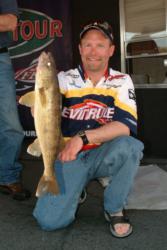 The prize purse at the championship totals $650,000. The winning pro gets $100,000 while the winning co-angler takes home $10,000. Pros are paired with co-anglers and each competitor can fish with two lines. Possession limit is eight fish and the weigh-in limit is five. Upgrading isn’t allowed. Weigh fish must be 14 inches or longer.
The prize purse at the championship totals $650,000. The winning pro gets $100,000 while the winning co-angler takes home $10,000. Pros are paired with co-anglers and each competitor can fish with two lines. Possession limit is eight fish and the weigh-in limit is five. Upgrading isn’t allowed. Weigh fish must be 14 inches or longer.
Tournament hours are 7:30 a.m. to 3:30 p.m., with weigh-ins beginning at the Bismarck Civic Center each day at 4:30 p.m.